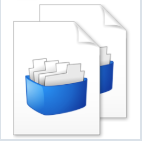
Pseudo-translation Provider for Trados Cloud
By Trados AppStore Team
Free
Description
Drawing inspiration from the Trados Studio concept, this AddOn enables users to simulate translations.
The main goal is to identify potential issues in the user interface (UI) or user experience (UX) before the actual translation process begins. It allows Engineers and Project Managers to spot problems such as source content processing, truncation and layout issues or encoding errors early in the development process, thereby saving time and resources. See documentation for more details.
How it works:
- Text expansion/contraction: The pseudo-translator alters the text to simulate how translations might expand or contract
- Special character support: This helps identify issues with encoding, font rendering, or text input/output
Technical details
1.0.33.0 - Trados Accelerate, Trados Team, Trados Enterprise
Changelog:
Fixed a minor issue related to configuration validation for "Replacement translation engine name".
Checksum:
Release date: 2025-09-24
No related information.
Trados Accelerate, Trados Team, Trados Enterprise
1.0.33.0
Fixed a minor issue related to configuration validation for "Replacement translation engine name".
1.0.32.0
- Added configuration options for Pseudo-translation Type [Random or Deterministic]
- Added configuration options for Start & end of segment delimiters.
Trados Studio cloud capabilities, Trados Accelerate, Trados Team, Trados Enterprise
1.0.29.0
- Change release note to “Perfect Match stage within workflows now working as expected”
1.0.26
- Initial Release
Introduction
Drawing inspiration from the Trados Studio concept, this AddOn enables users to simulate translations using expansion factors which can be specified on a per target language basis. Dummy translation either originates from the pseudo-translation dictionary, or special characters like $. The AddOn supports two key workflows: running pseudo-translation only or sequentially whereby after the pseudo-translation task has been completed, the project files are reprocessed for actual translation.
Key Features
1.Early Detection of Layout Issues
- Text Expansion: Simulating how text length might change when translated into different languages helps identify whether UI elements can accommodate longer or shorter text without truncation or overlap.
- Right-to-Left Language Support: It ensures that the UI correctly handles languages with right-to-left text direction, avoiding alignment and display issues.
2.Improved Character Set and Encoding Handling
- Special Characters and Non-Latin Scripts: Pseudo-translation introduces characters from various languages, helping to detect encoding problems, font rendering issues, or missing character support early on.
3.Cost and Time Efficiency
- Preemptive Problem Solving: By catching potential issues before the actual translation process, it reduces the need for expensive and time-consuming post-translation bug fixes.
- Streamlined Process: Engineers and Project Managers can address localisation issues earlier in the development cycle, reducing the likelihood of delays later on.
4.Better User Experience (UX) Design
- Consistency Across Languages: Ensures that the application provides a consistent user experience across all supported languages, with proper spacing, layout, and text readability.
- Accessibility: Helps in designing an interface that remains accessible and user-friendly, even when translated into languages with different reading directions or text lengths
5.Enhanced Localisation Testing
- Automated Testing: Pseudo-translation can be integrated into automated testing frameworks, allowing for continuous verification of localisation readiness as the software evolves.
- Comprehensive Coverage: It helps in covering edge cases that might not be immediately obvious, such as how the application handles very short or very long strings in different languages
6.Risk Mitigation
- Avoiding Last-Minute Changes: Identifying localisation issues early reduces the risk of having to make last-minute changes that could introduce new bugs or disrupt the release schedule.
- Quality Assurance: Improves overall software quality by ensuring that all potential localisation challenges are addressed before the product goes to market.
Technical Requirements
Once AddOn has been installed and configured, you need to create a Translation Engine that is dedicated to the Pseudo-translation task. This would be done under Resources > Linguistic Resources > Translation Engines > New Translation Engine.
Here you are able to add Pseudo-translation as a Machine Translation provider
Supported Workflows
1.Pseudo-translation only
A recommended workflow for any project manger who is on boarding a new client or getting familiar with a new range of source files as the focus will be on content processing.
A project is dedicated purely for the purpose of applying Pseudo-translation, with a dependency on the Pseudo-translation Translation Engine. Project files are left at the translation stage so they can be viewed in the Editor view.
Benefit of this workflow is that users can assess how source content has been processed based on the file type configuration. Choosing to finalise the files will then give insight, as to how the the native target document has been generated and if additional provisions would be require, example custom file type management, extensive DTP.
2.Pseudo-translate followed by official translation (sequential)
Requirement is for the project name to start with "ext", The project is created,initially with the Pseudo-translation Translation Engine. Project files get to the translation stage so that pseudo-translation can be applied. Thereafter all other workflow stages are skipped. The pseudo-translated files are then left in a cancelled sate so that the target files can be downloaded.
Once the pseudo-translation has been completed, the project source files are automatically readded to the project for the purpose of official translation and complete workflow compliance, using the translation engine specified within the Pseduo-translation configuration.
Benefit of this workflow is that within the same project, users can estimate post translation efforts and requirements in parallel with the start of official translation workflow, without Note with this workflow, users cant address any file type related issues that may occur.
Installing Pseudo-translation Provider AddOn
It can be installed in 2 ways:
1.Within your Language Cloud tenant.
Access your account settings and from the drop down menu, select RWS AppStore. From the AddOn’s listed select Pseudo-translation Provider to install
2.Alternatively you can install it via the RWS AppStore
Configuring Pseudo-translation Provider
Once installed you can configure your preferences which will be used for all future projects that require Pseudo-translation.

- Replacement translation engine name:
In the event you wish to apply Pseudo-translate followed by official translation, this field is used to confirm which Translation Engine will be used for the the official translation once the project files have been reprocessed.
- Apply pseudo-translation from the dictionary:
If the option is enabled, it will apply pseudo-translation from the dictionary. If not enabled, it will apply the $ character
- Expansion factor:
When translating text between languages, the "expansion factor" refers to the typical change in the length of the text due to differences in language structure, vocabulary, and grammar. Expansion factor starts with 1. If you wish to see what impact the various target language expansions will have within the final document layout, you can specify custom expansions factors under Language-specific settings.
- Language-specific settings:
An example of a custom expansion on a per target language basis {"de-DE": {"expansionFactor": "2.0"}, "jp-Jp": {"expansionFactor": ".05"}}
- Pseudo Translate Type:
Specifies the method used for pseudo-translation: - Random: Applies random characters or strings. - Deterministic: Applies consistent transformations, resulting in predictable pseudo-translations.
- Append Start String:
Specify a string to be automatically appended to the beginning of each translation segment. Example: We configured the value as _ (underscore) then “Hello World” will be translated as “_Hello world”.
- Append End String:
Specify a string to be automatically appended to the end of each translation segment. Example: We configured the value as _ (underscore) then “Hello World” will be translated as “Hello world_”.








